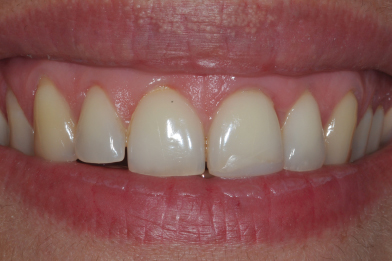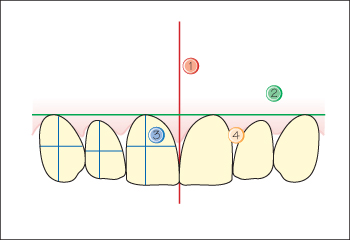17
Patient evaluation: esthetic considerations
The increasing demand for dental implants in the esthetic zone (anterior maxilla) is a challenge for the clinician who is seeking not only implant success but also esthetic predictability. With this in mind, the appearance and stability of the soft tissues are important factors to consider.
Acceptable esthetic results in the anterior area necessitate more complex treatments than in non-esthetic standard situations. However, the patient’s request should be carefully evaluated to avoid overtreatments. Esthetic evaluation comprises both an objective and a subjective aspect. A full photographic documentation is essential.
Compliance and the Patient’s Demand
Patient compliance is a key factor. The patient must be informed of the complexity and limitations of the treatment (see Chapter 22). If the esthetic demand of the patient is beyond the technical possibilities that can be offered by implant therapy, non-implant strategies should be considered.
Smile Line
The smile line defines the lip position and its relationship to teeth during a “natural” smile. Most patients show part of the interproximal papilla but not the gingival margins.
Patients with a high lip line (“gummy” smile) are challenging, as they will show all the tissues surrounding the future implant restoration (Fig. 17.1).
Figure 17.1 Patient with a high lip line (“gummy” smile).

Dental and periodontal full examination will highlight the following elements: teeth positions, teeth dimensions, gingival contour, and midline position (Fig. 17.2).
Figure 17.2 The determinants of esthetics. 1. Symmetry. 2. Gingival line. 3. Crown shape and proportions. 4. Interproximal papilla.

Biotype and Soft Tissue Thickness
Biotype describes the periodontal morphology and it can be of two main types (Olsson & Lindhe, 1991): a thin-scalloped type (with long triangular teeth) and a thick flat type (with short square teeth).
Patients with a thin scalloped biotype are considered at “high esthetic risk” (Fig. 17.3). Bone modifications after tooth extraction will be more pronounced for these patients, and in cases of impaired healing, the esthetic consequences wi/>
Stay updated, free dental videos. Join our Telegram channel

VIDEdental - Online dental courses


